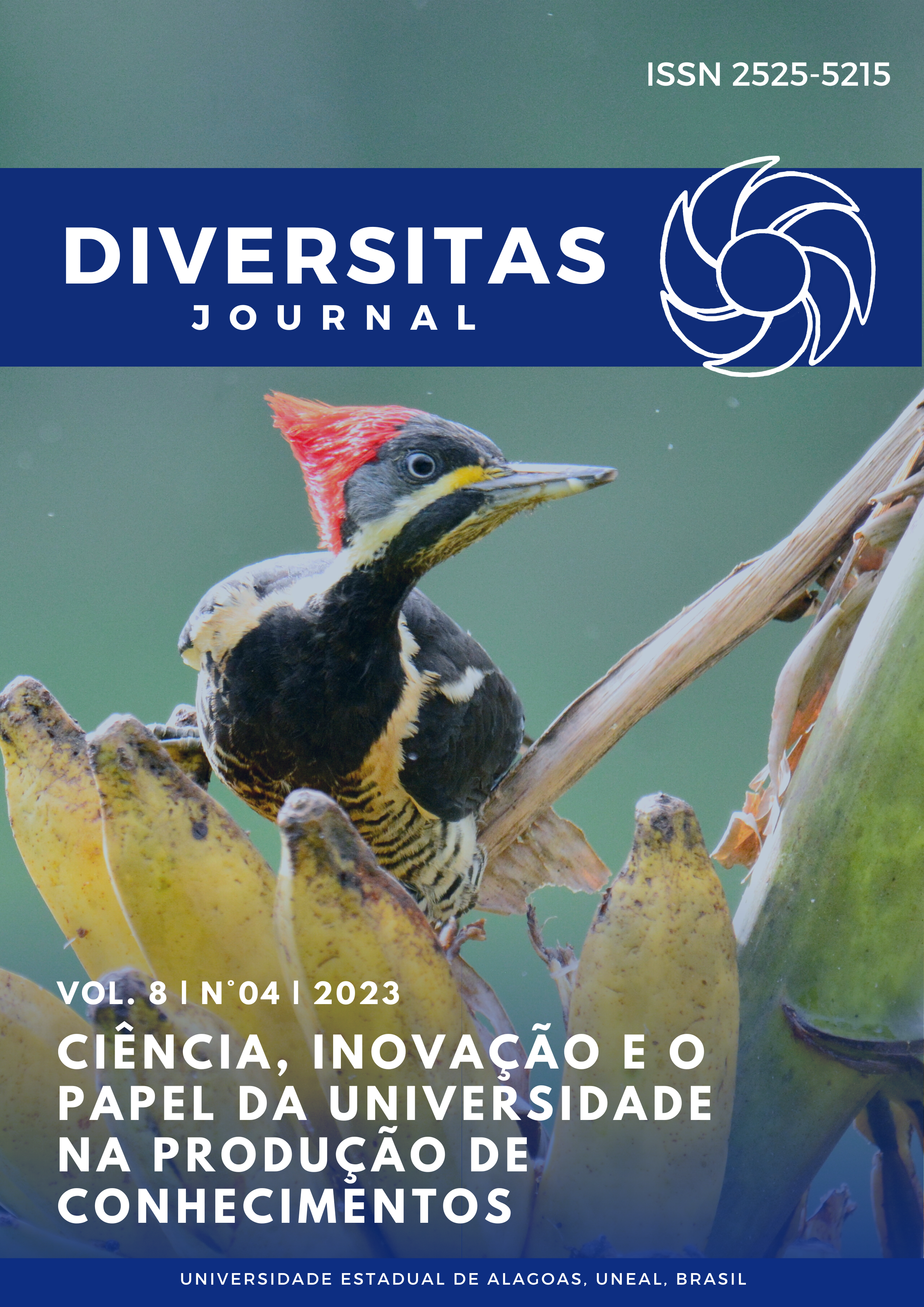Geovisualization of the expansion of higher education in two immediate geographical regions of the State of Alagoas
DOI:
https://doi.org/10.48017/dj.v8i4.2683Keywords:
University, Interiorization, Spatial AnalysisAbstract
In the last few years, there has been a strong increase in the supply of Higher Education throughout the country, more specifically in cities in the interior. This expansion is mainly linked to the insertion of public policies that aim to decentralize the offer of undergraduate courses from the large metropolitan regions to the interior of the States of the Federation. In order to understand the dynamics undertaken in the territory of Alagoas, two immediate geographical regions were defined for the development of this study. Methodologically, the study was structured in a triad: In Literature, the use of geoprocessing techniques with the aid of the IBGE database and the use of Google Earth Street View to identify the location of the Institutions. The study presented the importance of the recent expansion that, despite its contradictions, is established in the territory promoting access and professional formation in regions previously excluded.
Metrics
References
Anguelov, D.; Dulong, C; Filip, D.; Frueh, C.; Lafon, S. Google Street view: Capturing the world at street level. Computer, v. 43, n. 6, p. 32-38, 2010. DOI: 10.1109/MC.2010.170
Bertin, J. Sémiologie Graphique: les diagrames, les réseaux, les cartes. Paris/La Haye: Monton & Gauthier-Villars, 1967.
Castello-Climent, Amparo .; Hidalgo-Cabrillana, Ana. Economics of Education Review, 2012, vol. 31, issue 4, 391-409.
Correa, R. L. Contribuição à análise espacial do sistema universitário brasileiro. Revista Brasileira de Geografia, Rio de Janeiro, v. 36, n. 1, p. 3-32, jan./mar. 1974.
Chow, T. E. The potential of maps APIs for internet GIS applications. Transactions in GIS, Chichester, v. 12, n. 2, p. 179-191, 2008. DOI: 10.1111/j.1467-9671.2008.01094.x
Hanuschech, Eric A.; Woessmamn, Ludger. The knolev education and the economies of gorwth, Cambridge, MA: MIT Press.
IBGE, Instituto Brasileiro de Geografia e Estatística. Estimativas populacionais dos municípios. Dados e informações Disponíveis em: https://www.ibge.gov.br/estatisticas/sociais/populacao/9103-estimativas-de-populacao.html?=&t=resultados. Acesso em 27 jul. 2022.
INEP (Instituto Nacional de Estudos e Pesquisas Educacionais Anísio Teixeira). Matrizes de Referência. Página atualizada em: 07 de agosto 2017. Disponível em: http://portal.inep.gov.br/educacao-basica/encceja/matrizes-de-referencia Acesso em 07/2022.
Laudares, S. Geotecnologia ao alcance de todos. Editora Appris. Curitiba, 2014.
Lorenzi, D.; Vaidya, J.; Chun, S.; Shafiq, B.; Atluri, V. Enhancing the government service experience through QR codes on mobile platforms. Government Information Quarterly, Philadelphia, v. 31, n. 1, p. 6–16, 2014. DOI: https://doi.org/10.1016/j.giq.2013.05.025
Maceachren, A. M.; Kraak, M. J. Research challenges in geovisualization. Cartography and Geographic Information Science, v. 28, n. 1, Jan. 2001. DOI: https://doi.org/10.1559/152304001782173970
Piore, M. J.; Sabel, C. F. The second industrial divide: possibilities for prosperity. New York: Basic Books, 1984.
Rosette, A. C., Menezes, P. M. L. 2011. Erros comuns na cartografia temática. Rio de Janeiro: UFRJ, 1-9.
Silveira. Maria Laura. O Brasil: território e sociedade no início do século XXI. 6 ed. São Paulo: Record, 2006.
Silveira. Maria Laura. O Ensino Superior Público e Particular e o Território Brasileiro. São Paulo: ABMES, 2000.
Downloads
Published
How to Cite
Issue
Section
License
Copyright (c) 2023 Tiago Sandes Costa, Gisele Nunes de Souza Sandes

This work is licensed under a Creative Commons Attribution 4.0 International License.
The Diversitas Journal expresses that the articles are the sole responsibility of the Authors, who are familiar with Brazilian and international legislation.
Articles are peer-reviewed and care should be taken to warn of the possible incidence of plagiarism. However, plagiarism is an indisputable action by the authors.
The violation of copyright is a crime, provided for in article 184 of the Brazilian Penal Code: “Art. 184 Violating copyright and related rights: Penalty - detention, from 3 (three) months to 1 (one) year, or fine. § 1 If the violation consists of total or partial reproduction, for the purpose of direct or indirect profit, by any means or process, of intellectual work, interpretation, performance or phonogram, without the express authorization of the author, the performer, the producer , as the case may be, or whoever represents them: Penalty - imprisonment, from 2 (two) to 4 (four) years, and a fine. ”


















